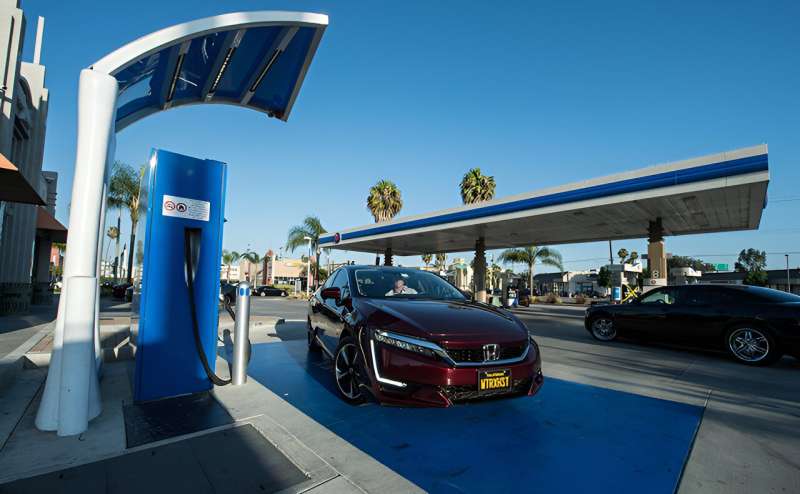This article has been reviewed according to Science X's editorial process and policies. Editors have highlighted the following attributes while ensuring the content's credibility:
fact-checked
peer-reviewed publication
trusted source
proofread
Predictive model could improve hydrogen station availability

Consumer confidence in driving hydrogen-fueled vehicles could be improved by having station operators adopt a predictive model that helps them anticipate maintenance needs, according to researchers at the U.S. Department of Energy's National Renewable Energy Laboratory (NREL) and Colorado State University (CSU).
Stations shutting down for unscheduled maintenance reduces hydrogen fueling availability to consumers and may slow adoption of these types of fuel cell electric vehicles, the researchers noted. The use of what is known as a prognostics health monitoring (PHM) model would allow hydrogen stations to reduce these unscheduled events.
"Motorists expect to be able to fuel their vehicles without any problems. We want to ensure motorists who drive hydrogen-fueled cars have the same experience," said Jennifer Kurtz, lead author of the paper, "Hydrogen Station Prognostics and Health Monitoring Model," which appears in the International Journal of Hydrogen Energy. "This predictive model can let station operators know in advance when a problem might occur and minimize any disruptions that motorists might experience with hydrogen fueling."
Co-authored by Spencer Gilleon of NREL and Thomas Bradley of CSU, the article posits the PHM model would improve station availability and consumer confidence.
The availability of hydrogen as a vehicle fuel is low compared to the ubiquity of gasoline, a fact reflected in the number of stations that dispense the low-emission fuel.
While California has more than 10,000 gasoline stations, the Hydrogen Fuel Cell Partnership counts just 59 retail hydrogen stations across the state. With relatively few choices, motorists who rely on hydrogen must be confident their needed fuel is available. Station operators must make any necessary repairs to meet the demands of consumers, but they also must investigate the causes of any failures to avoid future problems.
Data from the National Fuel Cell Technology Evaluation Center reveals the single most common reason hydrogen stations shut down for unscheduled maintenance is problems with the dispenser system, which encompasses such items as the hoses and dispenser valves as well as the user interface.
By using a data-based PHM, station operators could reduce the frequency of unscheduled maintenance and increase the frequency of preventive maintenance. The researchers have dubbed this particular PHM "hydrogen station prognostics health monitoring," or H2S PHM.
The H2S PHM calculates the probability a component will continue working without a failure, based on how many fills the station has completed. The model can also be used to estimate the remaining useful life for each of the components, thereby lowering maintenance costs and making the stations more reliable.
Using a hypothetical example, the researchers considered a dispenser valve that the H2S PHM has flagged as needing attention. The station operator can then be prepared for upcoming maintenance and schedule a technician to come when demand for hydrogen will be low. That cuts down on the amount of time a station would be unable to fuel vehicles. If the valve were to fail without warning, the station operator would have to call a technician, wait for their arrival and diagnosis of the problem, while at the same time be unable to provide fuel.
Kurtz, the director of NREL's Energy Conversion and Storage Systems Center, noted that limitations exist when applying H2S PHM to the reliability of a hydrogen station. The method would not predict sudden failures, which can be caused by human error. The H2S PHM is also only as good as the available data, and more data is needed.
More information: Jennifer Kurtz et al, Hydrogen station prognostics and health monitoring model, International Journal of Hydrogen Energy (2023). DOI: 10.1016/j.ijhydene.2023.08.098
















